American Bonsai at the NC Arboretum
+95
kingsnake
Tom
MKBonsai
BrianS
manumidam
Chris Cochrane
Intricate Simplicity
chench53
KyleT
Maros Belan
DjTommy
Bolero
Gonetopot
Rick36
M. Frary
Van
Toshiro
fiona
Precarious
drbuzzbee
geo
LanceMac10
MichaelS
kimo
Chellis
Leo Schordje
FrankP999
dick benbow
BrianG
crust
TN Jim
Seth Ellwood
Wander
peterkang
Judgie
Kevin S - Wisco Bonsai
Vance Wood
JMcCoy
brett2013
GerhardGerber
lordy
Eric Group
my nellie
steveb
Jaybird
Todd Ellis
jgeanangel
Daygan
AlainK
Richard S
Randy_Davis
Robert J. Baran
David Brunner
William N. Valavanis
Jkd2572
Dale Cochoy
Jesse McMahon
prestontolbert
yamasuri
bingregory
Stephen Krall
DougB
Ashiod
JADunnagan
sayotefries
JudyB
Dan W.
Khaimraj Seepersad
DuncanJH
Dave Murphy
monte
MikeG
augustine
Russell Coker
Kev Bailey
lennard
BigDave
Marty Weiser
Smithy
coh
tmmason10
dorothy7774
gman
Dave Leppo
hometeamrocker
bwaynef
Billy M. Rhodes
Walter Pall
Sam Ogranaja
JimLewis
MartinSweeney
bonsaisr
Auballagh
John Quinn
Arthur Joura
99 posters
Page 25 of 40
Page 25 of 40 •  1 ... 14 ... 24, 25, 26 ... 32 ... 40
1 ... 14 ... 24, 25, 26 ... 32 ... 40 
 Re: American Bonsai at the NC Arboretum
Re: American Bonsai at the NC Arboretum
I'm glad the discussion is bearing fruit again.
Herr Pall; Thanks for the great examples. You have said that your collection includes trees of various styles, not just naturalistic. Would you be willing, on you blog where you often have a frame with the brief history of the tree you are showing, to tell what style each tree is?
see you in Harrisburg in October.
Herr Pall; Thanks for the great examples. You have said that your collection includes trees of various styles, not just naturalistic. Would you be willing, on you blog where you often have a frame with the brief history of the tree you are showing, to tell what style each tree is?
see you in Harrisburg in October.
Dave Leppo- Member
 Re: American Bonsai at the NC Arboretum
Re: American Bonsai at the NC Arboretum
Thanks Walter,
The visual examples help a lot when trying to understand the differences.
Looking forward to seeing you again at the NC Expo. Hoping to make it to Natures Way in December.
Steve
The visual examples help a lot when trying to understand the differences.
Looking forward to seeing you again at the NC Expo. Hoping to make it to Natures Way in December.
Steve

Stephen Krall- Member
 Re: American Bonsai at the NC Arboretum
Re: American Bonsai at the NC Arboretum
Richard S wrote:... ...However for the sake of clarity would it be possible to add an illustration of the naturalistic style as well?
Having a direct visual comparison in the same post would be a useful addition to this discussion and a well chosen example might even help dispel the myth that naturalistic bonsai are just poor quality material, crudely worked, stuck in a pot and called art... ...
Yes, please Mr. Pall, sir!Walter Pall wrote:will be back soon and answer this all.

my nellie- Member
 Re: American Bonsai at the NC Arboretum
Re: American Bonsai at the NC Arboretum
[quote="Walter Pall"]
Walter,
I don't see any difference in the style of this tree.......
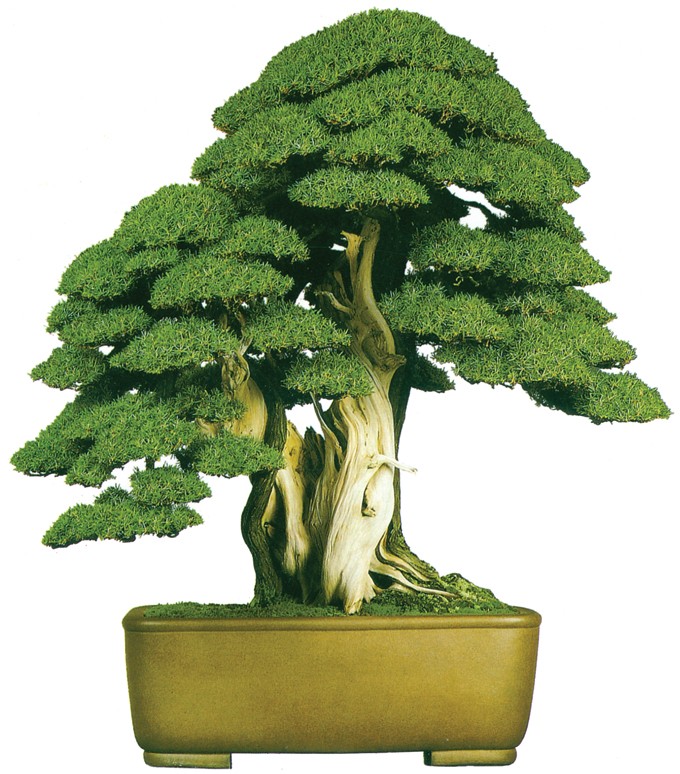
And this tree. The first is obviously in a different league - older, more refined, more worked but the styling is basically the same. But you have one as ''classic'' and one as ''modern''

So you regard poorly designed or ''unfinished trees as a ''style''?
Is this tree ''according to clear rules''? ''well designed''?
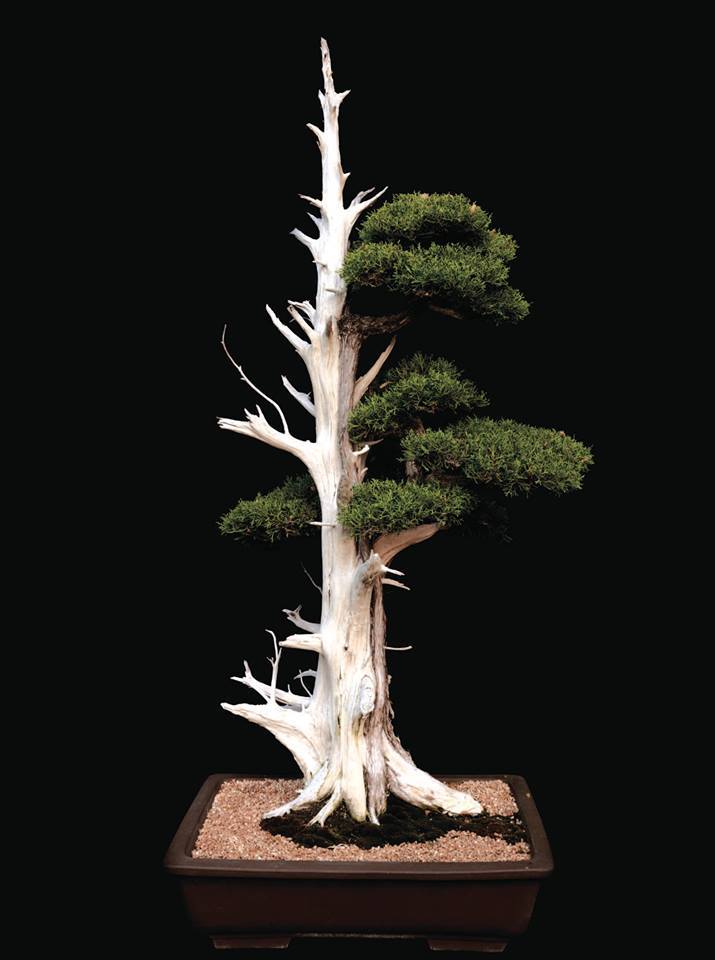
What about this one?

This tree is more or less going down the style of the first needle juniper. It is ''rushed'', ''new'', ''raw'' for sure and very inferior because of this and other things but can you really seperate the styles for those reasons?

This one looks like an old hinoki and looks like a Japanese trained one too - not western. Therefore it would be many decades old. I don't like it much, but how can you seperate this from your classical? You have it as neo classical. When did the ''neo classical period start? Is it only western? If not, why did the Japanese proponents of the neo classical turn their back on tradition only to make inferior trees? This is not a style IMO it is simply inferior trees (or unfinished) It's only inevitable that as more and more people (including Japanese) take up bonsai, that more and more sub-standard examples appear. It is quite natural.
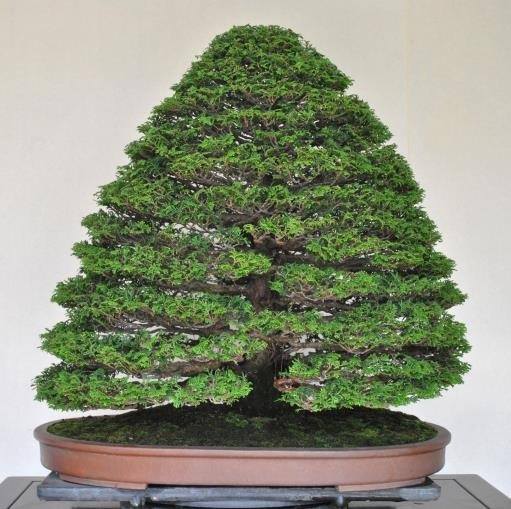
I completely agree with your comments about ''moderen'' bonsai in these examples below. Although I think the second one could quickly be made into a very good tree with the removal of that rediculous and meaningless long jin and some branch rearranging!



However I disagree with placing this tree in the same catagory. (ie show off, aggressive, egotistical, grotesque, artificial) It is none of these things. The arrangement of the crown has been influenced by the contemporary trend towards a very full neat crown, but this is really only a small matter. The most important parts of the tree (the trunk and main branches) are very natural and fit more with your ''classical'' description to me.
However I only regard ''cassical'' as being in the very deliberate style of the early pine trees with the first branch the main one and one third up from the height of the tree etc etc. This particular tree does not fit into those very rigid parameters. As much as I hate to classify bonsai, I (personally) would put this somewhere between ''naturalistic'' and ''modern''
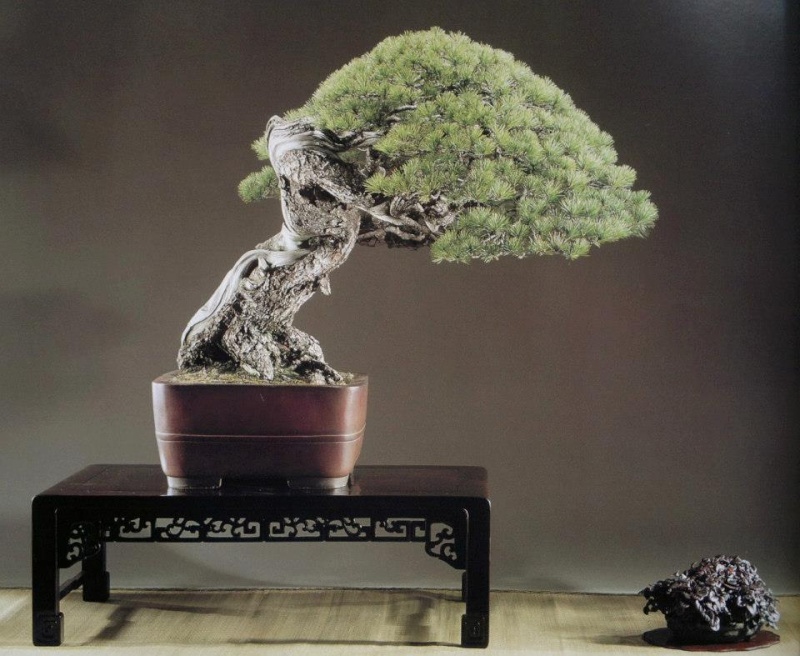
The same with this one..

I really need to comment on this one! This tree almost makes me angry. It is a very deliberate attempt by the maker to bring attention to himself and IMO has completely disregarded (or missed) the whole concept of growing bonsai. I cannot even call this tree a bonsai!
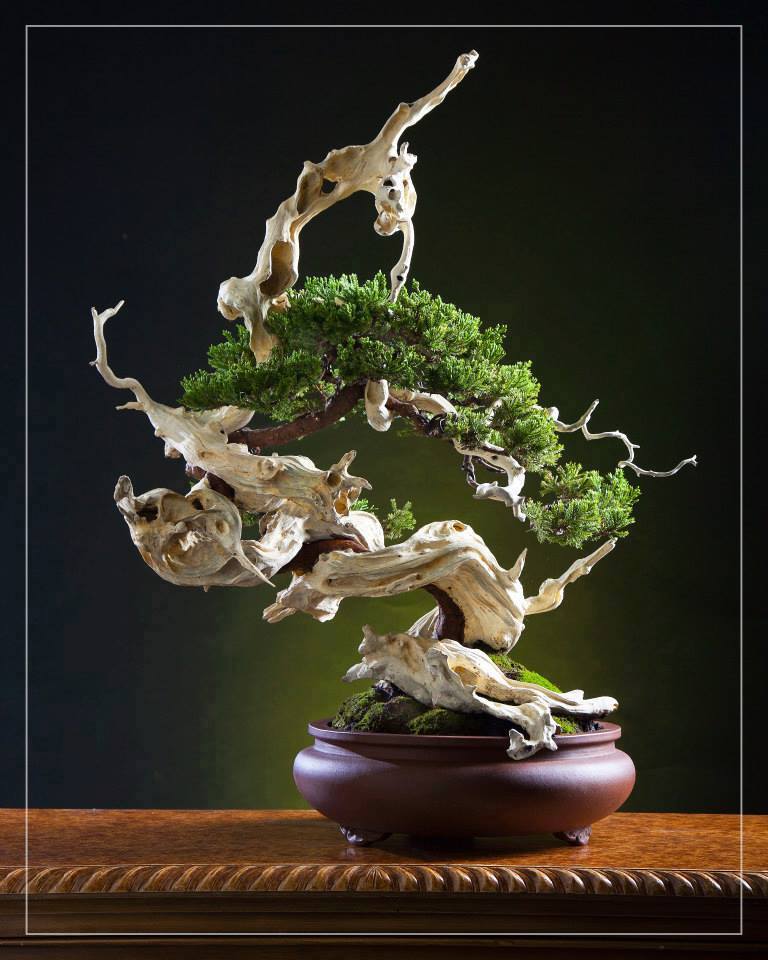
Classical Bonsai Style
Pro:
Ideal
Quiet
Less is more
Zen Buddhism
Wide acceptance
Static
Abstract
Soul more important than form
No holes in broadleaved trees except for Prunus
Deadwood - less is more
Con:
look alike
No surprises
often not art but rather craft
Sometimes boring
No innovation
artificial
Walter,
I don't see any difference in the style of this tree.......

And this tree. The first is obviously in a different league - older, more refined, more worked but the styling is basically the same. But you have one as ''classic'' and one as ''modern''

Neoclassical Bonsai Style
(Western Classical Bonsai Style)
Pro:
according to clear rules
Popular
Well designed
According to expectations
Everybody can be successful
Abstract
No deadwood on broadleaved trees
Deadwood mostly artificial
Con:
cookie-cutter
No soul
Misunderstood as 'classical', really retro
Old-fashioned
So you regard poorly designed or ''unfinished trees as a ''style''?
Is this tree ''according to clear rules''? ''well designed''?

What about this one?

This tree is more or less going down the style of the first needle juniper. It is ''rushed'', ''new'', ''raw'' for sure and very inferior because of this and other things but can you really seperate the styles for those reasons?

This one looks like an old hinoki and looks like a Japanese trained one too - not western. Therefore it would be many decades old. I don't like it much, but how can you seperate this from your classical? You have it as neo classical. When did the ''neo classical period start? Is it only western? If not, why did the Japanese proponents of the neo classical turn their back on tradition only to make inferior trees? This is not a style IMO it is simply inferior trees (or unfinished) It's only inevitable that as more and more people (including Japanese) take up bonsai, that more and more sub-standard examples appear. It is quite natural.

I completely agree with your comments about ''moderen'' bonsai in these examples below. Although I think the second one could quickly be made into a very good tree with the removal of that rediculous and meaningless long jin and some branch rearranging!



However I disagree with placing this tree in the same catagory. (ie show off, aggressive, egotistical, grotesque, artificial) It is none of these things. The arrangement of the crown has been influenced by the contemporary trend towards a very full neat crown, but this is really only a small matter. The most important parts of the tree (the trunk and main branches) are very natural and fit more with your ''classical'' description to me.
However I only regard ''cassical'' as being in the very deliberate style of the early pine trees with the first branch the main one and one third up from the height of the tree etc etc. This particular tree does not fit into those very rigid parameters. As much as I hate to classify bonsai, I (personally) would put this somewhere between ''naturalistic'' and ''modern''

The same with this one..

I really need to comment on this one! This tree almost makes me angry. It is a very deliberate attempt by the maker to bring attention to himself and IMO has completely disregarded (or missed) the whole concept of growing bonsai. I cannot even call this tree a bonsai!

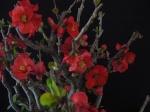
MichaelS- Member
 Re: American Bonsai at the NC Arboretum
Re: American Bonsai at the NC Arboretum
A tree never made me mad.. But i also dont like the last one though.
Its more like a sculpture, very tanuki-ish, even if it isnt.
Its more like a sculpture, very tanuki-ish, even if it isnt.
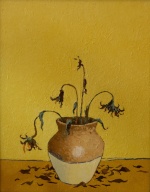
DjTommy- Member
 Re: American Bonsai at the NC Arboretum
Re: American Bonsai at the NC Arboretum
Well, if I have learned one thing from this thread lately is that Bonsai craftsman have an extremely narrow vision on what bonsai should look like and could be. Maybe the distinction between styles isn't necessary, but instead a distinction between the creators of bonsai. Craftsman vs. Artist?

Stephen Krall- Member
 Re: American Bonsai at the NC Arboretum
Re: American Bonsai at the NC Arboretum
Stephen Krall wrote:Well, if I have learned one thing from this thread lately is that Bonsai craftsman have an extremely narrow vision on what bonsai should look like and could be. Maybe the distinction between styles isn't necessary, but instead a distinction between the creators of bonsai. Craftsman vs. Artist?
Yes and depending on wether you like or dont like a certain tree you are a craftsman or an artist
Oh wait that means you can be an artist today but maybe you are a craftsman tomorrow

DjTommy- Member
 Re: American Bonsai at the NC Arboretum
Re: American Bonsai at the NC Arboretum
I cannot even call this tree a bonsai!
Amen, brother. I call these kinds of trees "designed by Mixmaster."
But . . . when you get down to it I'm concerned very little about any kind of label or "classification" system for styles or schools of bonsai. What matters to me is its overall feeling of "treeness."

JimLewis- Member
 Re: American Bonsai at the NC Arboretum
Re: American Bonsai at the NC Arboretum
MichaelS wrote:As much as I hate to classify bonsai...
to which the devil's advocate would ask:
then why spend what is obviously a considerable amount of time in the pondering ?
but i must say that i agree in not finding the distinction between styles in your first example.
(with my novice eyes)

Kevin S - Wisco Bonsai- Member
 Re: American Bonsai at the NC Arboretum
Re: American Bonsai at the NC Arboretum
To me, the difference between the first two groups is more like "National Exhibition Level Bonsai" and "Local Club Exhibition Bonsai". Same thing, just a different level of refinement. Perhaps many are satisfied to get their trees to that second level ("everyone can be successful") and there is nothing wrong with that...but I don't think that is what most in the west are ultimately aiming for. Perhaps that is the best they can do while juggling other life responsibilities (work, family, etc). So maybe "backyard hobbiest style" is a more appropriate label, if you must.

coh- Member
 Provenance
Provenance
I think a one paragraph Provenance should accompany Exhibition Level Bonsai, I believe that it would clear up the Particular Bonsai Status and maybe Style.
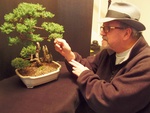
Bolero- Member
 Re: American Bonsai at the NC Arboretum
Re: American Bonsai at the NC Arboretum
I think the first question to ask here is "do different bonsai styles really exist" or are there just "good, bad or mediocre" bonsai trees?
I think the answer is yes, different styles obviously do exist.
I'll admit that there are bound to be some grey areas (I mean a neo-classical tree is obviously going to be aesthetically similar to a classical one because that's what neo-classical means) but I still think this is worth discussing.
We have no problem talking about different forms of tree (cascade, semi cascade, formal upright, informal upright etc) so if it's worth bothering with these distinctions why not also recognise different styles?
The answer I suppose is that the parameters defining most forms are already well known and accepted where as the parameters defining styles are yet to be fully clarified, at least among the wider bonsai community. This will require considerable discussion and debate before there is wide spread agreement.
Presumably Arthur is hoping to help facilitate this debate through this thread?
Anyway, to me it seems worth trying, otherwise we will have nothing more to say about radically different trees (like these two post by Kimo) beyond they are "good/bad" or "both informal uprights" or whatever. I think that would be a shame.
https://servimg.com/view/19259351/42
https://servimg.com/view/19259351/54
Regards
Richard
I think the answer is yes, different styles obviously do exist.
I'll admit that there are bound to be some grey areas (I mean a neo-classical tree is obviously going to be aesthetically similar to a classical one because that's what neo-classical means) but I still think this is worth discussing.
We have no problem talking about different forms of tree (cascade, semi cascade, formal upright, informal upright etc) so if it's worth bothering with these distinctions why not also recognise different styles?
The answer I suppose is that the parameters defining most forms are already well known and accepted where as the parameters defining styles are yet to be fully clarified, at least among the wider bonsai community. This will require considerable discussion and debate before there is wide spread agreement.
Presumably Arthur is hoping to help facilitate this debate through this thread?
Anyway, to me it seems worth trying, otherwise we will have nothing more to say about radically different trees (like these two post by Kimo) beyond they are "good/bad" or "both informal uprights" or whatever. I think that would be a shame.
https://servimg.com/view/19259351/42
https://servimg.com/view/19259351/54
Regards
Richard

Richard S- Member
 Re: American Bonsai at the NC Arboretum
Re: American Bonsai at the NC Arboretum
[quote="coh"]
Exactly. And also a different level of technique from the start - which usually leads to a different finished product regardless of age.
To me, the difference between the first two groups is more like "National Exhibition Level Bonsai" and "Local Club Exhibition Bonsai". Same thing, just a different level of refinement.
Exactly. And also a different level of technique from the start - which usually leads to a different finished product regardless of age.

MichaelS- Member
 Re: American Bonsai at the NC Arboretum
Re: American Bonsai at the NC Arboretum
[quote="beer city snake"]
Well I'm just putting forward a viewpoint that 1/ Classification of bonsai is both very subjective and in many cases does little to clarify a particular direction/vision of the artist. and 2/ That I am yet to see the benefit or necessity for it. (But I still love to discuss individual trees for what they convey to the viewer)
MichaelS wrote:As much as I hate to classify bonsai...
to which the devil's advocate would ask:
then why spend what is obviously a considerable amount of time in the pondering ?
Well I'm just putting forward a viewpoint that 1/ Classification of bonsai is both very subjective and in many cases does little to clarify a particular direction/vision of the artist. and 2/ That I am yet to see the benefit or necessity for it. (But I still love to discuss individual trees for what they convey to the viewer)

MichaelS- Member
 Re: American Bonsai at the NC Arboretum
Re: American Bonsai at the NC Arboretum
MichaelS wrote:beer city snake wrote:MichaelS wrote:As much as I hate to classify bonsai...to which the devil's advocate would ask:
then why spend what is obviously a considerable amount of time in the pondering ?
Well I'm just putting forward a viewpoint that 1/ Classification of bonsai is both very subjective and in many cases does little to clarify a particular direction/vision of the artist. and 2/ That I am yet to see the benefit or necessity for it. (But I still love to discuss individual trees for what they convey to the viewer)
as i recall some of your earlier posts in this discussion, i personally wish you would have put that forth right from the start as i tend to agree with that for the most part...
however, i imagine that "seeing the benefit or necessity" of such classifications is also subjective.
some see the need and some dont...
i dont think either camp should worry overly much about how the other camp feels...
it sounds like you are asking arthur, walter, et al to prove to you the need for classifications... correct ?
(as an aside, i imagine both are busier that a cat covering scat on a tin roof, with walter's tour and arthur's upcoming expo)

Kevin S - Wisco Bonsai- Member
 An Open Letter To Walter Pall 9/28/15
An Open Letter To Walter Pall 9/28/15
Hello Walter,
Thank you for taking the time to post your most recent reply, which has generated at least some commentary. As I write this, you are in Portland, OR being one of the judges at the Artisan's Cup event, and I wonder how that is going. I look forward to hearing your impressions of the show and all that goes with it.
To get myself ready to write this post, I just spent some time rereading large passages of your "Styles and Forms" essay that I linked to in my previous open letter to you. That is an exhaustive treatment of the subject and it is exhausting to read, too, but I am glad you wrote it. I am grateful someone has taken the time to think so deeply about bonsai as an art, and to outline the ways bonsai criticism must parallel criticism in other forms of art as regards the awareness and understanding of stylistic evolution. I am grateful because this is important work, and even more so because I would never want to be the person to have to do it. I find I am not so different from a great many bonsai practitioners in that I would rather spend my time shaping little trees than thinking about why I do it the way I do, or worse, talking or writing about it. Yet for me there is no avoiding either of those things. They fall squarely within the parameters of my job description. A big part of that job involves interacting with the general public, or the "innocent" public, as you once put it. I never think of the public as particularly innocent, but they are full of questions, and these questions get directed at me and I am obliged to answer them. Answering these questions can be an annoyance, mostly because of the repetitive nature of them, but they can also be instructive. They tell me what the non-bonsai part of the population (which is the overwhelming majority of people) thinks about bonsai, what about it captures their interest, what strikes them as strange, what stereotyped ideas or curious misconceptions they harbor. My job also brings me into contact with a great many bonsai hobbyists, and here too the interaction is instructive. I get asked many questions by these people as well, mostly of the "how-to" variety but occasionally they are of a more challenging nature, as in "why do you do this?" and "why don't you do that?" And once again I get insight as to how this audience perceives bonsai and how much they are thinking about it, and how much of their conception of bonsai is based on unthinking acceptance of things they have been taught. All this having to deal with people, whether the general public or the bonsai-aware, forces me to think, talk and sometimes write about bonsai.
Shortly after our on-line correspondence commenced I had an interesting conversation with someone who told me they enjoyed reading it but wondered if maybe I was not drifting away from the stated topic of this thread, that being "American Bonsai at the NC Arboretum". I told them I was not drifting away at all. I hope, through this correspondence with you, to bring that topic even more sharply into focus. So my questions to you about style, naturalistic and otherwise, have all been aimed toward a certain objective, and that is to help make it better understood what is happening with bonsai at the North Carolina Arboretum. I think this is worthwhile because our bonsai efforts at the Arboretum have been outstandingly successful, and this despite (or is it because of?) the fact that we are presenting bonsai in a markedly different way than is customarily done. This difference is intentional, not accidental. It has grown out of my awareness that certain aspects of bonsai as it is typically practiced in this country do not connect in any personally meaningful way with the great majority of people in this country. I speak of my own country, the US, because it is the only one I am first-hand familiar with and it is the one in which I have to operate. Still, I see pictures on the Internet of bonsai shows from around the world and it leads me to think conditions are similar elsewhere in the West.
It is not such a big deal if an individual decides he or she wants to do bonsai in an unconventional way. In my fairly limited travels I have met a few people who have found their own direction with bonsai after many years, but usually these people work in relative isolation. They have little or no use for the greater bonsai community and it often regards them the same way. It is an altogether different thing if a public collection decides to be unconventional. In that instance being isolated or disconnected is not an option; the purpose of being public is to have visibility and to engage with as wide an audience as possible. Way back on page 1 of this thread, when I first introduced it almost 3 years ago, you were one of the first people to check in on it, offering your thoughts on what you observed when you visited our bonsai garden in 2011. What you had to say then was so astute that I will not bother trying to approximate it here, but will instead provide this direct link to it and encourage those who are interested to go and read it again: https://ibonsaiclub.forumotion.com/t12772-american-bonsai-at-the-nc-arboretum#133822 As you noted, we aim bonsai at our primary audience - the general public. And as I answered you then, at the same time as we are aiming at, and connecting with, the general public, I am also intending that the bonsai community take notice as well. That is why I write this thread and that is why I travel and talk to different groups and present at symposiums, shows and conventions. I am trying to put information out where the bonsai community can find it.
I have asked you about different styles in bonsai, with a particular interest in the Naturalistic style. You have provided a good overview, and even though you are giving it only a simplified, stripped down, cursory treatment I think you are already over the heads of a good many people. I have spent a lot of time thinking over this business of bonsai styles and find it is not so easy a topic to dissect, but for myself I have decided this:
The Classical Style, as viewed from the standard Western perspective, refers to bonsai made in Japan and reflecting the prevailing Japanese aesthetic, from a period dating back at least 100 years and perhaps more, but reaching its zenith in the late-middle of the 20th century. It is the stuff one would find in the Nippon Bonsai Association publication "Classic Bonsai of Japan", or at the major shows in Japan prior to advent of Mr. Kimura and those who followed in his wake. For many practitioners it represents the Holy Grail of bonsai perfection.
The Neo-classical Style is all the bonsai made in imitation of the true Classical bonsai. By following a prescribed methodology people attempt to emulate the Classical look, and some get very close to it while others produce results that border on grotesque parody. The overwhelming majority of bonsai I see in this country, and those from bonsai shows in many Western countries, as we often see represented by photos posted on this forum, fall into the Neo-classical or Western Classical style.
The Modern Style appears to have sprung largely from the loins of Mr. Kimura, and his apprentices cum disciples have carried it throughout the world. It is typified by power, precision, overt technical prowess and as much impressive deadwood as possible. It is the stuff that generates the most excitement in bonsai circles these days, the stuff that bonsai rock star dreams are made of.
The Naturalistic Style reverts back to the example of trees in nature as the prime source for inspiration. For most people in the West the reference for this style is typically one of the naturalistic schools of Penjing from China, although there is a fair amount of unrecognized naturalism in the handling of deciduous material in Japanese bonsai. Although true naturalistic bonsai exist in the US they are comparatively rare and often not appreciated.
Again, this is a completely subjective take on the matter, the best reasoning of a person who admits he has no interest in being an academician about it. If anyone wants to set me straight about it they are welcome to do so. But based on this way of looking at it I have arrived at the following conclusions:
Obviously, all of the thoughts above are in regards to actually doing bonsai, not owning them. A person with enough money can purchase an excellent specimen of any style, and can hire a professional to keep it looking right, too. I have no opinion about this one way or another. I am not in a position to spend a lot of money on bonsai and neither is my employer. For me, bonsai is about doing, about being expressive, creating beauty and promoting good health.
There is more to come about this, but enough for now. If you have any thoughts you would like to share I would of course be keen to hear them.
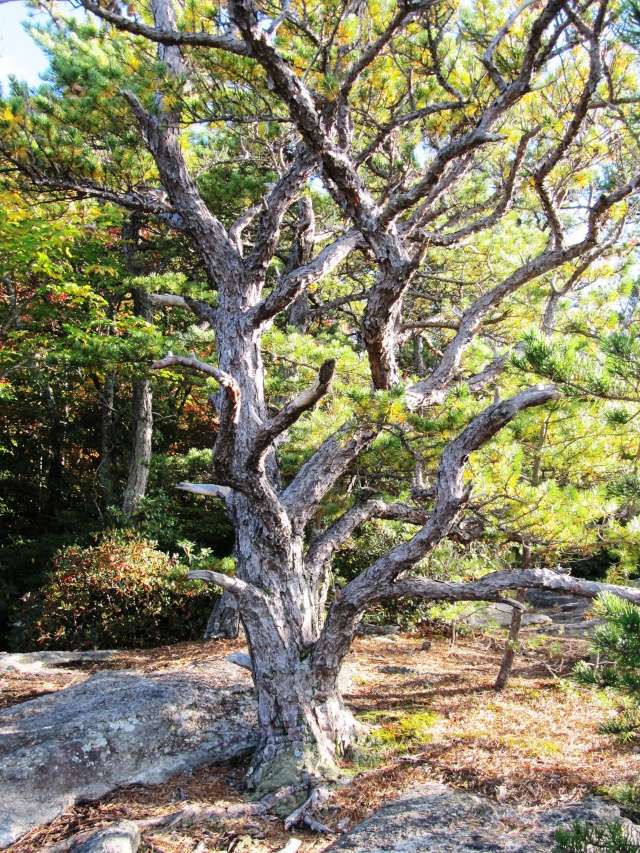
Thank you for taking the time to post your most recent reply, which has generated at least some commentary. As I write this, you are in Portland, OR being one of the judges at the Artisan's Cup event, and I wonder how that is going. I look forward to hearing your impressions of the show and all that goes with it.
To get myself ready to write this post, I just spent some time rereading large passages of your "Styles and Forms" essay that I linked to in my previous open letter to you. That is an exhaustive treatment of the subject and it is exhausting to read, too, but I am glad you wrote it. I am grateful someone has taken the time to think so deeply about bonsai as an art, and to outline the ways bonsai criticism must parallel criticism in other forms of art as regards the awareness and understanding of stylistic evolution. I am grateful because this is important work, and even more so because I would never want to be the person to have to do it. I find I am not so different from a great many bonsai practitioners in that I would rather spend my time shaping little trees than thinking about why I do it the way I do, or worse, talking or writing about it. Yet for me there is no avoiding either of those things. They fall squarely within the parameters of my job description. A big part of that job involves interacting with the general public, or the "innocent" public, as you once put it. I never think of the public as particularly innocent, but they are full of questions, and these questions get directed at me and I am obliged to answer them. Answering these questions can be an annoyance, mostly because of the repetitive nature of them, but they can also be instructive. They tell me what the non-bonsai part of the population (which is the overwhelming majority of people) thinks about bonsai, what about it captures their interest, what strikes them as strange, what stereotyped ideas or curious misconceptions they harbor. My job also brings me into contact with a great many bonsai hobbyists, and here too the interaction is instructive. I get asked many questions by these people as well, mostly of the "how-to" variety but occasionally they are of a more challenging nature, as in "why do you do this?" and "why don't you do that?" And once again I get insight as to how this audience perceives bonsai and how much they are thinking about it, and how much of their conception of bonsai is based on unthinking acceptance of things they have been taught. All this having to deal with people, whether the general public or the bonsai-aware, forces me to think, talk and sometimes write about bonsai.
Shortly after our on-line correspondence commenced I had an interesting conversation with someone who told me they enjoyed reading it but wondered if maybe I was not drifting away from the stated topic of this thread, that being "American Bonsai at the NC Arboretum". I told them I was not drifting away at all. I hope, through this correspondence with you, to bring that topic even more sharply into focus. So my questions to you about style, naturalistic and otherwise, have all been aimed toward a certain objective, and that is to help make it better understood what is happening with bonsai at the North Carolina Arboretum. I think this is worthwhile because our bonsai efforts at the Arboretum have been outstandingly successful, and this despite (or is it because of?) the fact that we are presenting bonsai in a markedly different way than is customarily done. This difference is intentional, not accidental. It has grown out of my awareness that certain aspects of bonsai as it is typically practiced in this country do not connect in any personally meaningful way with the great majority of people in this country. I speak of my own country, the US, because it is the only one I am first-hand familiar with and it is the one in which I have to operate. Still, I see pictures on the Internet of bonsai shows from around the world and it leads me to think conditions are similar elsewhere in the West.
It is not such a big deal if an individual decides he or she wants to do bonsai in an unconventional way. In my fairly limited travels I have met a few people who have found their own direction with bonsai after many years, but usually these people work in relative isolation. They have little or no use for the greater bonsai community and it often regards them the same way. It is an altogether different thing if a public collection decides to be unconventional. In that instance being isolated or disconnected is not an option; the purpose of being public is to have visibility and to engage with as wide an audience as possible. Way back on page 1 of this thread, when I first introduced it almost 3 years ago, you were one of the first people to check in on it, offering your thoughts on what you observed when you visited our bonsai garden in 2011. What you had to say then was so astute that I will not bother trying to approximate it here, but will instead provide this direct link to it and encourage those who are interested to go and read it again: https://ibonsaiclub.forumotion.com/t12772-american-bonsai-at-the-nc-arboretum#133822 As you noted, we aim bonsai at our primary audience - the general public. And as I answered you then, at the same time as we are aiming at, and connecting with, the general public, I am also intending that the bonsai community take notice as well. That is why I write this thread and that is why I travel and talk to different groups and present at symposiums, shows and conventions. I am trying to put information out where the bonsai community can find it.
I have asked you about different styles in bonsai, with a particular interest in the Naturalistic style. You have provided a good overview, and even though you are giving it only a simplified, stripped down, cursory treatment I think you are already over the heads of a good many people. I have spent a lot of time thinking over this business of bonsai styles and find it is not so easy a topic to dissect, but for myself I have decided this:
The Classical Style, as viewed from the standard Western perspective, refers to bonsai made in Japan and reflecting the prevailing Japanese aesthetic, from a period dating back at least 100 years and perhaps more, but reaching its zenith in the late-middle of the 20th century. It is the stuff one would find in the Nippon Bonsai Association publication "Classic Bonsai of Japan", or at the major shows in Japan prior to advent of Mr. Kimura and those who followed in his wake. For many practitioners it represents the Holy Grail of bonsai perfection.
The Neo-classical Style is all the bonsai made in imitation of the true Classical bonsai. By following a prescribed methodology people attempt to emulate the Classical look, and some get very close to it while others produce results that border on grotesque parody. The overwhelming majority of bonsai I see in this country, and those from bonsai shows in many Western countries, as we often see represented by photos posted on this forum, fall into the Neo-classical or Western Classical style.
The Modern Style appears to have sprung largely from the loins of Mr. Kimura, and his apprentices cum disciples have carried it throughout the world. It is typified by power, precision, overt technical prowess and as much impressive deadwood as possible. It is the stuff that generates the most excitement in bonsai circles these days, the stuff that bonsai rock star dreams are made of.
The Naturalistic Style reverts back to the example of trees in nature as the prime source for inspiration. For most people in the West the reference for this style is typically one of the naturalistic schools of Penjing from China, although there is a fair amount of unrecognized naturalism in the handling of deciduous material in Japanese bonsai. Although true naturalistic bonsai exist in the US they are comparatively rare and often not appreciated.
Again, this is a completely subjective take on the matter, the best reasoning of a person who admits he has no interest in being an academician about it. If anyone wants to set me straight about it they are welcome to do so. But based on this way of looking at it I have arrived at the following conclusions:
- It is not possible for me or any of the other people on this forum to produce actual Classical bonsai.
- The best those inclined toward Classical bonsai can hope to do is Neo-classical bonsai.
- Neo-classical bonsai has no roots in Western culture, therefore pursuing it entails trying to assimilate a foreign culture, or at least cultivate some deep understanding of it.
- A comparatively minuscule number of Western people have the desire to completely assimilate a foreign culture, which is very difficult if not impossible to do.
- A larger but still comparatively minuscule number of Western people have the desire to cultivate a deep understanding of a foreign culture, but they often do a poor job of it and end up being awkward.
- Modern bonsai requires old plant material with impressive trunks, typically collected, which is not available to many people due to the rigors of collecting it or the cost of buying it.
- Modern bonsai also requires a degree of technical skill most bonsai hobbyists do not possess.
Obviously, all of the thoughts above are in regards to actually doing bonsai, not owning them. A person with enough money can purchase an excellent specimen of any style, and can hire a professional to keep it looking right, too. I have no opinion about this one way or another. I am not in a position to spend a lot of money on bonsai and neither is my employer. For me, bonsai is about doing, about being expressive, creating beauty and promoting good health.
There is more to come about this, but enough for now. If you have any thoughts you would like to share I would of course be keen to hear them.


Arthur Joura- Member
 Re: American Bonsai at the NC Arboretum
Re: American Bonsai at the NC Arboretum
Thanks to Mr. Joura and Mr. Pall for sparking an interesting discussion of container tree styles. Like many of the commenters, I find Mr. Pall's photographic examples of each style quite helpful. Mr. Joura's concise historical comments are also much appreciated, which indicate how/where/when each style first developed.
It seems to me that the definition of artistic styles is a worthy endeavor because it: 1) helps artists focus on key compositional choices open to them (which helps them clarify their own goals and sharpen their own work), 2) helps them develop a language of characteristics that facilitates discussion of and comparison of different artists’ work, and 3) helps them identify trends and shifts in the work of a whole community of artists.
I would like to comment on Mr. Pall's lists of identifying features of the styles. I find these unhelpful. Rather than lists of identifying features, they are predominately a grab bag of Mr. Pall’s personal associations with the styles, aspects of their current popularity in the bonsai community, and Mr. Pall’s (usually derogatory) evaluations of the styles and their advocates. While all of this gives us a fascinating window into Mr. Pall’s likes, dislikes and allegiances, it is not very helpful for those of us who are trying to figure out what these styles actually consist of, apart from Mr. Pall’s evaluation of them. The question of what are the common, identifying features of the trees that make up these styles remains unanswered in this discussion. Perhaps Mr. Pall takes a more rigorous approach in his essay "Styles and Forms" and doesn't care to reproduce it here, which would be quite understandable. I'm here commenting only on Mr. Pall's forum post. While the photographic examples provide helpful clues, they leave many unanswered questions as MichaelS shows in his helpful analysis.
Below I offer for discussion a more objective and systematic definition of the identifying features of the styles. Please note that I’m basing this entirely on my analysis of the photographic examples offered by Mr. Pall. I studied the photographs, identified their key visual features and then described them in comparative language, so that you can compare and contrast each feature of each style.
I would love to see a parallel list of identifying features of naturalism that might complete the set and shed some further light on naturalism. Perhaps Mr. Joura, Mr. Pall or somebody else would like to take a stab at that? Also, I might have some things wrong on my lists, so please feel free to correct me.
CLASSICAL
1. Poised sense of balance
2. General symmetry with minor notes of asymmetry
3. Simple overall form
4. Flat composition of branches (no overlapping branches)
5. Systematic and rhythmic distribution of branches
6. Distinct and precisely formed foliage pads
7. Generous, dense foliage
8. Subtle movement in trunk and branch lines
9. Emphasis on nuanced curved lines
NEO-CLASSICAL
1. Taut, stiff sense of balance
2. General symmetry with major notes of asymmetry
3. Simple overall form
4. Flat composition of branches (no overlapping branches)
5. Irregular distribution of branches
6. Shaggy and indistinct foliage pads, often merged together
7. Sparse foliage with plenty of space between pads
8. Overt and simple movement in trunk and branch lines
9. Combination of bold curves and bold straight lines
MODERN
1. Precarious sense of balance with strong directional shifts
2. General asymmetry with minor notes of symmetry
3. Compound or complex overall form
4. Layered or interwoven composition of branches
5. Churning, swirling distribution of branches
6. Shaggy and indistinct foliage pads, often merged together
7. Generous, dense foliage with plenty of space in-between pads
8. Sinuous, amplified, complex movement in trunk and branch lines
9. Emphasis on bold curved lines
It seems to me that the definition of artistic styles is a worthy endeavor because it: 1) helps artists focus on key compositional choices open to them (which helps them clarify their own goals and sharpen their own work), 2) helps them develop a language of characteristics that facilitates discussion of and comparison of different artists’ work, and 3) helps them identify trends and shifts in the work of a whole community of artists.
I would like to comment on Mr. Pall's lists of identifying features of the styles. I find these unhelpful. Rather than lists of identifying features, they are predominately a grab bag of Mr. Pall’s personal associations with the styles, aspects of their current popularity in the bonsai community, and Mr. Pall’s (usually derogatory) evaluations of the styles and their advocates. While all of this gives us a fascinating window into Mr. Pall’s likes, dislikes and allegiances, it is not very helpful for those of us who are trying to figure out what these styles actually consist of, apart from Mr. Pall’s evaluation of them. The question of what are the common, identifying features of the trees that make up these styles remains unanswered in this discussion. Perhaps Mr. Pall takes a more rigorous approach in his essay "Styles and Forms" and doesn't care to reproduce it here, which would be quite understandable. I'm here commenting only on Mr. Pall's forum post. While the photographic examples provide helpful clues, they leave many unanswered questions as MichaelS shows in his helpful analysis.
Below I offer for discussion a more objective and systematic definition of the identifying features of the styles. Please note that I’m basing this entirely on my analysis of the photographic examples offered by Mr. Pall. I studied the photographs, identified their key visual features and then described them in comparative language, so that you can compare and contrast each feature of each style.
I would love to see a parallel list of identifying features of naturalism that might complete the set and shed some further light on naturalism. Perhaps Mr. Joura, Mr. Pall or somebody else would like to take a stab at that? Also, I might have some things wrong on my lists, so please feel free to correct me.
CLASSICAL
1. Poised sense of balance
2. General symmetry with minor notes of asymmetry
3. Simple overall form
4. Flat composition of branches (no overlapping branches)
5. Systematic and rhythmic distribution of branches
6. Distinct and precisely formed foliage pads
7. Generous, dense foliage
8. Subtle movement in trunk and branch lines
9. Emphasis on nuanced curved lines
NEO-CLASSICAL
1. Taut, stiff sense of balance
2. General symmetry with major notes of asymmetry
3. Simple overall form
4. Flat composition of branches (no overlapping branches)
5. Irregular distribution of branches
6. Shaggy and indistinct foliage pads, often merged together
7. Sparse foliage with plenty of space between pads
8. Overt and simple movement in trunk and branch lines
9. Combination of bold curves and bold straight lines
MODERN
1. Precarious sense of balance with strong directional shifts
2. General asymmetry with minor notes of symmetry
3. Compound or complex overall form
4. Layered or interwoven composition of branches
5. Churning, swirling distribution of branches
6. Shaggy and indistinct foliage pads, often merged together
7. Generous, dense foliage with plenty of space in-between pads
8. Sinuous, amplified, complex movement in trunk and branch lines
9. Emphasis on bold curved lines
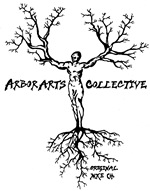
KyleT- Member
 Re: American Bonsai at the NC Arboretum
Re: American Bonsai at the NC Arboretum
I know the hookah puffing Caterpillar told Alice that a word only means what HE says it means, but we're using "style" in a couple of different ways here.
Generally, when we speak of bonsai styles, we've been talking about formal uprights or cascades or literati. Here, however, we've been using it much more broadly with terms like classical, neo-classical, modern, or naturalistic, all of which one assumes can have styles such as formal upright, cascade or literati within them. My simple little mind gets confused.
Seems to me the older meaning of style should take precedence and we need a different term for the others that we're tossing around here. Danged if I know what it might be
Generally, when we speak of bonsai styles, we've been talking about formal uprights or cascades or literati. Here, however, we've been using it much more broadly with terms like classical, neo-classical, modern, or naturalistic, all of which one assumes can have styles such as formal upright, cascade or literati within them. My simple little mind gets confused.
Seems to me the older meaning of style should take precedence and we need a different term for the others that we're tossing around here. Danged if I know what it might be

JimLewis- Member
 Re: American Bonsai at the NC Arboretum
Re: American Bonsai at the NC Arboretum
Jim
I'm sure there was a thread on here somewhere in which the issue of "style" V "form" was discussed at length. Unfortunately I've searched but can't find it.
Anyway, I'm pretty sure that Walter Pall put forward a very reasonable and I felt persuasive argument that what are traditionally called styles should really be called forms.
Doubtless it was controversial
Regards
Richard
I'm sure there was a thread on here somewhere in which the issue of "style" V "form" was discussed at length. Unfortunately I've searched but can't find it.
Anyway, I'm pretty sure that Walter Pall put forward a very reasonable and I felt persuasive argument that what are traditionally called styles should really be called forms.
Doubtless it was controversial
Regards
Richard

Richard S- Member
 Re: American Bonsai at the NC Arboretum
Re: American Bonsai at the NC Arboretum
Ok I was being dim!
The style V form discussion was in the second article that Arthur posted a link to in his post to Walter on page 40 of this thread.
Although I still think the original article might have been discussed on this forum somewhere in the past.
Regards
Richard
The style V form discussion was in the second article that Arthur posted a link to in his post to Walter on page 40 of this thread.
Although I still think the original article might have been discussed on this forum somewhere in the past.
Regards
Richard

Richard S- Member
 Re: American Bonsai at the NC Arboretum
Re: American Bonsai at the NC Arboretum
Jim, Arthur posted a link to this Worthless discussion about bonsai styles? by Walter Pall
http://walterpallbonsaiarticles.blogspot.com/2011/01/worthless-discussion-about-bonsai.html
http://walterpallbonsaiarticles.blogspot.com/2011/01/worthless-discussion-about-bonsai.html

Toshiro- Member
Page 25 of 40 •  1 ... 14 ... 24, 25, 26 ... 32 ... 40
1 ... 14 ... 24, 25, 26 ... 32 ... 40 
 Similar topics
Similar topics» American Bonsai at the NC Arboretum
» WISTERIA BONSAI AT INTERNATIONAL BONSAI ARBORETUM
» Ashville arboretum bonsai
» Show the Autumncolour from your bonsai
» Trip to the Rochester Arboretum
» WISTERIA BONSAI AT INTERNATIONAL BONSAI ARBORETUM
» Ashville arboretum bonsai
» Show the Autumncolour from your bonsai
» Trip to the Rochester Arboretum
Page 25 of 40
Permissions in this forum:
You cannot reply to topics in this forum






